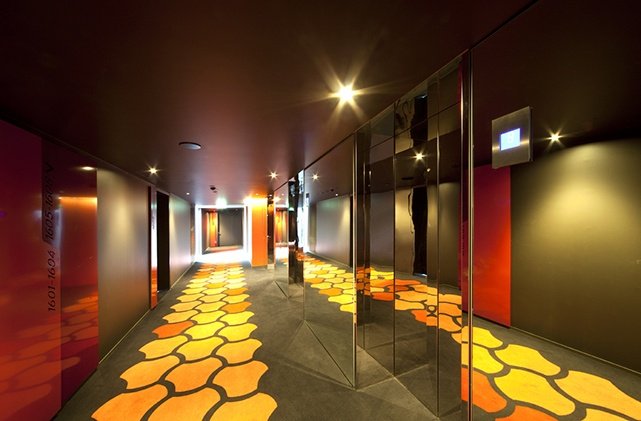One of the most significant changes to Australian home design in recent years is the exterior look of modern homes. Rather than the traditional brick exterior, many homeowners are now preferring the clean, modern look of a rendered home.
People love a rendered look because of its ability to realise a completely unique colour scheme. If you’re building, and looking for some inspiration, here are a few ideas to kick-start your journey to a beautifully rendered home.
(Feature image courtesy of Serenity Homes)
Contrasting is in right now!
Create a point of interest with your façade by crafting an element of contrast. Besides using a combination of materials such as cement, stone and timber, one way you can make your exterior pop is using a dark and light render next to each other.

(Contemporary use of contrasting colours and materials by Mojo Homes)
Matching designs and exteriors
Sometimes picking a colour is less about choice and more about what complements the design. Consult with your architect or designer on your colour scheme, because they will be able to advise you on what works with the architectural style, surrounding vegetation, and exterior features like pools – all of which influence the overall look of a home.
Don’t forget your own individual style
The great thing about a rendered home is it can reflect your individual style. Unlike bricks, the choices of colours available to a rendered home are limitless. However, there are restrictions you’re unlikely to get council approval for a bright pink facade in an area known for heritage homes, so it’s best to do a little research before you get started.

(A great example of a rendered colour scheme by Latitude 37)
Hebel is a beautiful way to live
Hebel opens up design possibilities with the extensive range of textures, finishes and colours available for their products, allowing you to achieve the exterior look you want. Additionally, Hebel provides benefits for homeowners, including high thermal and acoustic performance, making your home quiet and comfortable.
Rendered homes are gorgeous and align with the aesthetics of modern home design. They are also highly customisable, allowing you to create a look that is uniquely you. If you want the clean, modern look of a rendered home, there is no better choice than Hebel.
If you think a rendered home is for you, we encourage you to get in touch, so that we can help you find the right supplier for your needs.


